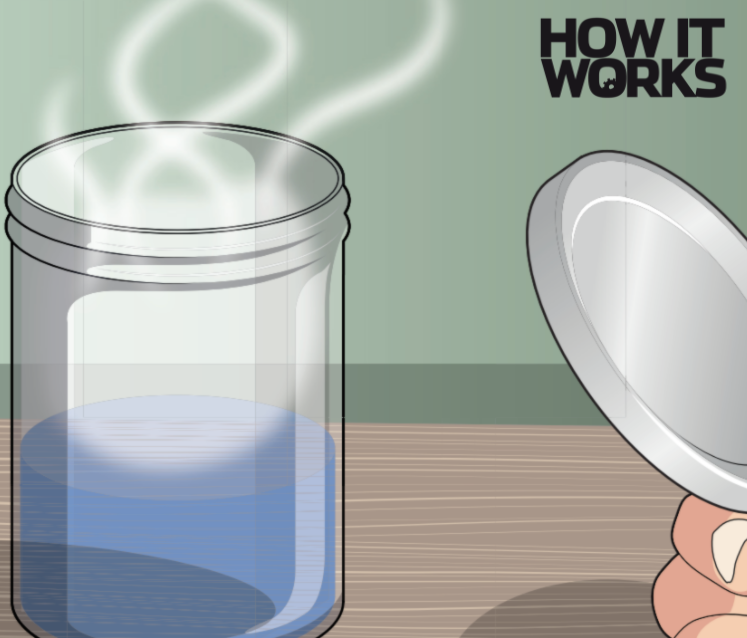How to make a cloud in a jar
by Ailsa Harvey · 05/05/2021
The sky is filled with water- this experiment will show you why

1. Collect your materials
For this experiment you will need a glass jar with a lid, one cup of hot water, some ice, hairspray and food colouring.

2. Make the base
Add a couple of drops of food colouring to the cup of water and pour it into the jar. Give the water a little swirl to warm the sides of the jar.

3. Add the spray
Take your can of hairspray and spray some into the jar. You will only need to spray for two to three seconds.

4. Seal the deal
As soon as you stop spraying, quickly fasten the lid onto the jar. Try to let as little of the aerosol escape as possible.

5. Cool the top
Place some ice cubes on top of the lid. Condensation will begin to appear in the form of a cloud.

6. Cloud creation
Continue watching the contents of the jar just above the water. You should see the cloud getting thicker and whiter.

7. Smooth escape
When the cloud is thick and white, remove the lid to release the contents. Watch how the cloud slowly creeps out of the jar.
Summary
This cloud is created due to the contrasting temperatures at the jar’s base and lid. When the warm water evaporates, it moves to the top of the jar. Here it comes into contact with air that has been cooled by the ice, forcing the water vapour to condense. Clouds form when there is a substance in the air for water to condense into, and in this case that is the hairspray. When you remove the lid, the hairspray escapes, carrying the water with it.
For more science and technology articles, pick up the latest copy of How It Works from all good retailers or from our website now. If you have a tablet or smartphone, you can also download the digital version onto your iOS or Android device. To make sure you never miss an issue of How It Works magazine, subscribe today!




